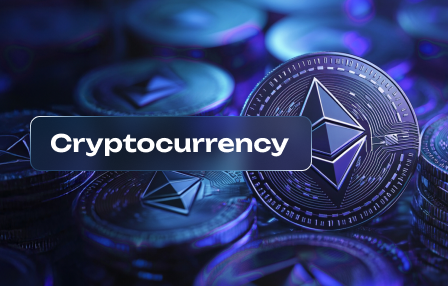How to transfer crypto between wallets
April 19, 2025
To initiate a safe transfer of cryptocurrency between wallets, always ensure that you have complete control over your private keys. Without the private keys, access to your crypto is compromised, making it critical to manage them securely.
Before executing any transaction, verify the wallet addresses meticulously. A single character mistake can lead to irreversible loss of funds. Utilize copy-paste functionality and double-check the addresses on both ends. Additionally, consider sending a small test amount prior to transferring larger sums; this minimizes potential losses due to errors.
Be aware of the fees associated with transactions on different networks and exchanges. These fees can vary significantly based on network congestion and wallet types used. Choosing an optimal time for your transfer can help reduce costs while ensuring timely execution.
Enhance your security by enabling two-factor authentication (2FA) on exchanges and wallets whenever possible. This adds an extra layer of protection against unauthorized access. Regularly update your software wallets and maintain backups of your keys in secure locations.
Choose the Right Wallet
Select a wallet that aligns with your transfer needs and security preferences. Hardware wallets provide robust security for long-term storage, as they keep private keys offline. Software wallets, including mobile and desktop options, offer convenience for frequent transactions but come with increased risk if not properly secured.
Assess the wallet’s fees associated with transfers. Some wallets impose transaction fees, while others may allow for fee-free transfers within their ecosystem. Analyze your balance and consider how fees impact your overall crypto holdings.
Evaluate the wallet’s compatibility with various cryptocurrencies. Ensure it supports the specific assets you intend to transfer. Many wallets are tailored for major currencies like Bitcoin or Ethereum, while others cater to a broader range of altcoins.
Prioritize user experience. A wallet that is easy to navigate can reduce the likelihood of errors during transfers. Look for features such as QR code scanning for addresses and clear transaction histories.
Examine additional security features such as two-factor authentication (2FA) and backup options. These enhance protection against unauthorized access and potential loss of keys.
Finally, consider whether you plan to use an exchange for trading or holding crypto. Some exchanges offer integrated wallets that simplify transfers but may expose you to higher risks compared to dedicated wallets.
Verify Recipient Address
Always double-check the recipient address before initiating a transfer. Copying and pasting the address is advisable to avoid errors caused by manual entry. Cryptocurrency addresses are case-sensitive; even a single incorrect character can lead to loss of funds.
Utilize QR codes when available, as they minimize the risk of typographical mistakes. Ensure that the address corresponds to the correct blockchain for the cryptocurrency being sent; sending Bitcoin to an Ethereum address will result in a permanent loss.
If possible, send a small test transaction first. This helps confirm that the recipient’s wallet can accept funds correctly without risking a significant balance. After confirming successful receipt, proceed with larger transactions.
Be cautious of phishing attempts where attackers may masquerade as legitimate exchanges or wallets. Verify URLs and never click on suspicious links that could compromise your private keys or wallet security.
Keep in mind any fees associated with transferring between wallets and ensure they are acceptable based on your transaction size and urgency. Prioritize secure methods for managing keys during transfers, such as hardware wallets or encrypted software solutions.
Use Secure Networks Only
Always conduct cryptocurrency transfers over secure and private networks. Public Wi-Fi can expose your transaction data to potential attackers. Utilize a Virtual Private Network (VPN) for an encrypted connection, ensuring that your keys and sensitive information remain safe from prying eyes.
Avoid making transfers on public networks, especially at cafes or airports. If you must use a public connection, ensure it’s secured with a VPN. This reduces the risk of security breaches during the transfer of crypto.
When accessing wallets or exchanges, confirm the network’s security by checking HTTPS in the browser address bar. Legitimate platforms will always use this protocol to protect user data. Ensure that any application used for transferring funds is downloaded from official sources only.
Be mindful of phishing attacks that may occur on unsecured networks, where attackers can impersonate legitimate services to steal your private keys or other sensitive information. Always double-check URLs and avoid clicking on suspicious links.
Staying vigilant about your network environment is critical when initiating any transaction. The fees associated with recovering lost funds due to hacking can be significant; thus, prioritize using secure connections for all wallets and transactions.
Confirm Transaction Details
Always double-check the transaction details before confirming any transfer. This step is critical in preventing costly mistakes.
- Review Amount: Ensure that the correct amount of cryptocurrency is being sent. Double-check your balance to avoid unintended transfers.
- Check Fees: Be aware of transaction fees associated with the transfer. Different wallets and networks may have varying fee structures that can impact the total amount deducted from your balance.
- Verify Network: Confirm that you are using the right blockchain network for your crypto type. Sending tokens over an incorrect network can lead to a permanent loss of funds.
- Review Recipient Address: Make sure that the recipient’s address matches exactly what was provided. Even a single character error can result in irreversible loss.
- Private Keys Security: Ensure that your private keys remain secure and never share them. Compromised keys can lead to unauthorized access to your wallet.
If all details align, proceed with the transaction confidently while maintaining vigilance throughout the process.



